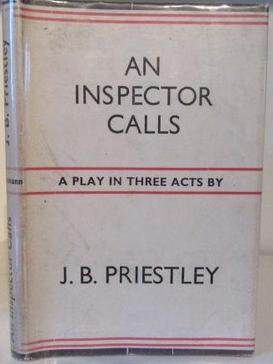
An Inspector Calls is a modern morality play written by English dramatist J. B. Priestley, first performed in the Soviet Union in 1945 and at the New Theatre in London the following year. It is one of Priestley's best-known works for the stage and is considered to be one of the classics of mid-20th century English theatre. The play's success and reputation were boosted by a successful revival by English director Stephen Daldry for the National Theatre in 1992 and a tour of the UK in 2011–2012.
8 Simple Rules is an American sitcom television series originally starring John Ritter and Katey Sagal as middle-class parents Paul and Cate Hennessy, raising their three children. Kaley Cuoco, Amy Davidson, and Martin Spanjers co-starred as their teenage kids: Bridget, Kerry, and Rory Hennessy. The series ran on ABC from September 17, 2002, to April 15, 2005. The first season focused on Paul being left in charge of the children after Cate takes a full-time job as a nurse, with comedic emphasis on his often strict rules concerning his daughters and dating. The series' name and premise were derived from the book 8 Simple Rules for Dating My Teenage Daughter by W. Bruce Cameron.

Evil Under the Sun is a work of detective fiction by British writer Agatha Christie, first published in the UK by the Collins Crime Club in June 1941 and in the US by Dodd, Mead and Company in October of the same year. The UK edition retailed at seven shillings and sixpence (7/6) and the US edition at $2.00.

Gerald FitzGerald, 14th Earl of Desmond, also counted as 15th or 16th, owned large part of the Irish province of Munster. In 1565 he fought the private Battle of Affane against his neighbours, the Butlers. After this, he was for some time detained in the Tower of London. Though the First Desmond Rebellion took place in his absence, he led the Second Desmond Rebellion from 1579 to his death and was therefore called the Rebel Earl. He was attainted in 1582 and went into hiding but was hunted down and killed.

The Rt Hon. Arthur Grey, 14th Baron Grey de Wilton, KG (1536–1593), was a baron in the Peerage of England. Lord Grey de Wilton is now largely remembered for his memoir of his father, for participating in the last defence of Calais (1558), and for his involvement in the massacre after the Siege of Smerwick (1580) on Corca Dhuibhne in County Kerry. He served as Lord Deputy of Ireland from 1580 until 1582.
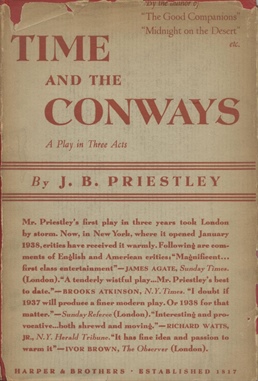
Time and the Conways is a British play written by J. B. Priestley in 1937 illustrating J. W. Dunne's Theory of Time through the experience of a moneyed Yorkshire family, the Conways, over a period of nineteen years from 1919 to 1937. Widely regarded as one of the best of Priestley's Time Plays, a series of pieces for theatre which played with different concepts of Time, it continues to be revived in the UK regularly.

The Beauty of Bath is a musical comedy with a book by Seymour Hicks and Cosmo Hamilton, lyrics by C. H. Taylor and music by Herbert Haines; additional songs were provided by Jerome Kern, F. Clifford Harris (lyrics) and P. G. Wodehouse (lyrics). Based loosely on the play David Garrick, the story concerns a young woman from a noble family, who falls in love with an actor. She then meets a sailor who appears identical to the actor and mistakes him for the latter. Her father objects to a marriage with the actor, but when it turns out that she really loves the sailor, all objections fall away.

Cyril Argentine Alington was an English educationalist, scholar, cleric, and author. He was successively the headmaster of Shrewsbury School and Eton College. He also served as chaplain to King George V and as Dean of Durham.

Elizabeth Bridget Armistead or Armitstead was a courtesan and, later, the wife of statesman and politician Charles James Fox. Her relationship with and marriage to Fox was one of the most famous and controversial of their age.
Annabella of Scotland was a Scottish princess, a member of the House of Stewart, and by her two marriages Countess of Geneva and Countess of Huntly. Both of her marriages were annulled, the first without being consummated and the second on grounds of consanguinity.

The Good Companions is a novel by the English author J. B. Priestley.

An Inspector Calls is a 1954 British drama film directed by Guy Hamilton and starring Alastair Sim, Jane Wenham and Eileen Moore. It is based upon the 1945 play An Inspector Calls by J.B. Priestley and was adapted for the screen by Desmond Davis. It was shot at Shepperton Studios with sets designed by the art director Joseph Bato.
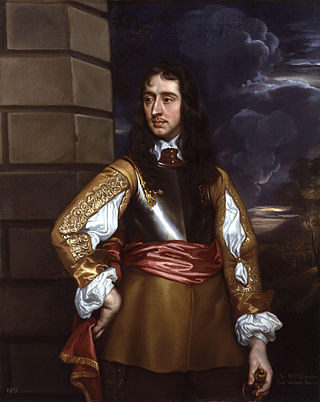
Sir William Compton was an English royalist army officer. He earned the name of the "godly cavalier" in 1648, from Oliver Cromwell, for his conduct at the siege of Colchester.
Bridget Norris, Countess of Berkshire was an English noblewoman, the daughter of Edward de Vere, 17th Earl of Oxford. Bridget was brought up by her maternal grandfather, the powerful statesman William Cecil, 1st Baron Burghley. She was also styled Lady Norris of Rycote and Viscountess Thame. She married Francis Norris, 1st Earl of Berkshire; however, the marriage was not a success, and they separated in 1606.
Sir Robert Drury of Hedgerley and Chalfont St Peter, Buckinghamshire, was the second son of Sir Robert Drury, Speaker of the House of Commons, and was the father of Sir Robert Drury (1525–1593), Sir William Drury, and Sir Drue Drury.

Elizabeth Rayner or Raynor, née Collier (1714–1800) was a British Unitarian benefactress.

Man on a Swing is a 1974 American thriller film directed by Frank Perry and written by David Zelag Goodman. The film stars Cliff Robertson, Joel Grey, Dorothy Tristan, Elizabeth Wilson and George Voskovec and was released on February 27, 1974, by Paramount Pictures. The film is loosely drawn from a true-life murder investigation and based on the non-fiction book The Girl on the Volkswagen Floor (1971) by journalist William Arthur Clark.
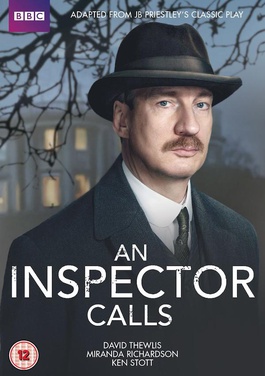
An Inspector Calls is a 2015 British thriller television film written by Helen Edmundson, based on the 1945 J. B. Priestley play of the same name. It is directed by Aisling Walsh, produced by Howard Ella and stars David Thewlis as the titular character. The film was first broadcast on 13 September 2015 on BBC One.
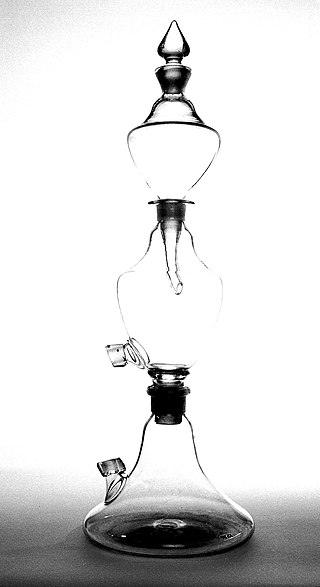
John Mervin Nooth was an English physician, scientist, and army officer. Nooth earned his medical degree from the University of Edinburgh in 1766 and was elected a Fellow of the Royal Society in 1774. In the same year, inspired by Joseph Priestley's work on "fixed air", Nooth invented an instrument for producing carbonated water. The Nooth apparatus, as it came to be called, became popular for household use; the liquid it produced was thought to have medicinal properties. Modified versions of the Nooth apparatus were used in commercial beverage manufacturing and in early experiments with general anaesthesia. Nooth joined the British Army in 1775 and served in North America until 1784, becoming superintendent-general of the British military hospitals in 1779. In 1788 he was deployed to Quebec; he remained in Canada until 1799 and became involved in scientific and political pursuits there. On his return he settled in Bath, England, where he lived until his death.















